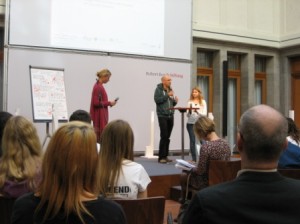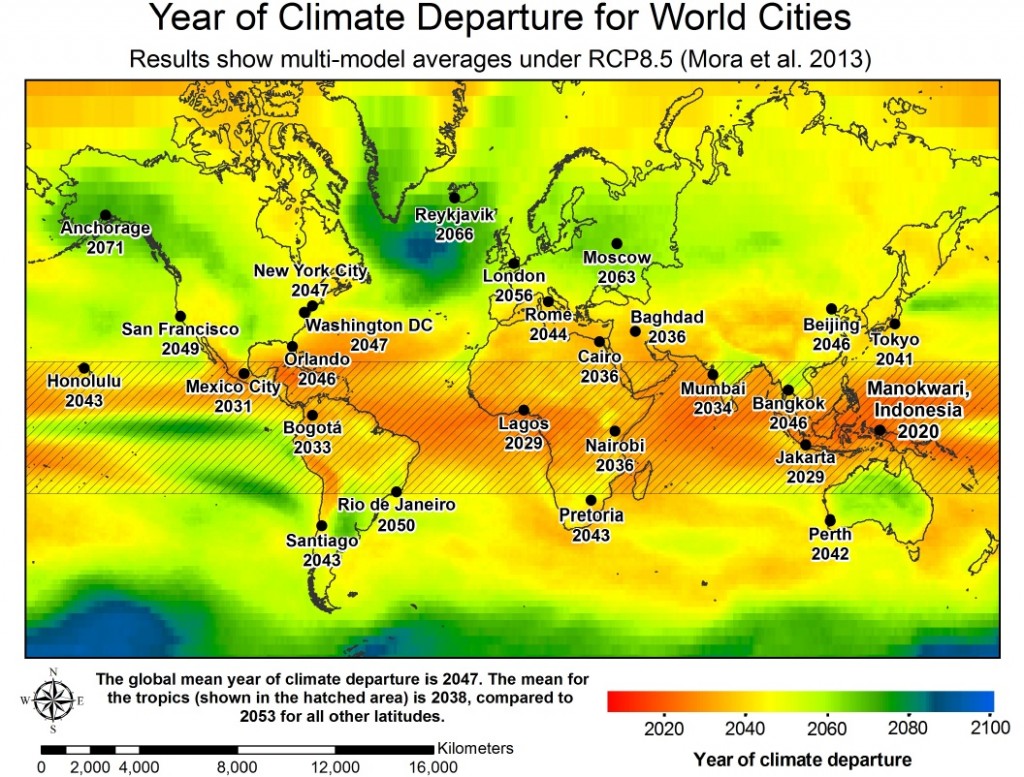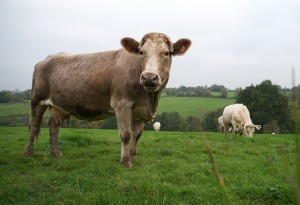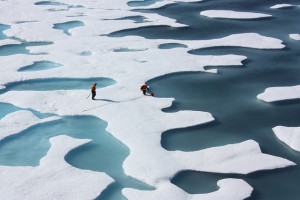Search Results for Tag: climate change
Young climate enthusiasts sharpen skills at ‘2° Campus’
For the past two years, the German chapter of the World Fund for Nature (WWF) has organized a project called “2° Campus” or “Two degrees Celsius Campus.” It’s targeted at young students in Germany between the ages of 15 and 19.
The aim is to bring together young people interested in climate issues and science and encourage them to work on related subjects ranging from energy, mobility, building insulation to food. As part of the project, the students visited German universities, spoke with scientists and even got the chance to work on research projects with them.
As the project drew to a close this week in Berlin, Global Ideas reporter Julia Henrichmann caught up with some of the young climate enthusiasts and found out what drives them to engage with climate and environmental issues.
Enno Gerhard, 16, from Bremen
Global Ideas: What made you take part in the project?
I happened to read about it in a newsletter. I believe that if we don’t change the world, our future generations will not survive.
 What was your focus during the project?
What was your focus during the project?
I always wanted to find out more about solar modules. We tried to figure out how to build organic solar cells. In the project, I was responsible for researching the variation of different temperatures in solar cells.
Has the 2° Campus project changed you as a person?
After taking part in the 2° Campus, I stopped eating meat, we even changed our electricity supplier at home. Now I would love to study physics to help build smart grids in Germany and to find new solutions for the power network (especially for alternative forms of energy).
What do you think are the most pressing climate issues?
We absolutely have to find quick answers for mobility, for example with electric cars. We also have to ensure that issues such as mobility and energy are brought together such as setting up new smart grids or building energy efficient buildings.
Lukas Jochum, 17, from Ottweiler in Saarland
Global Ideas: What got you interested in the project?
My teacher read about the project and asked me if I wanted to be part of it. I always wanted to save the earth and I’m already active in the Green Party.
What did you work on in the project?
 We worked on refitting old school buildings. For example, we looked at new ways of insulating buildings by installing new windows.
We worked on refitting old school buildings. For example, we looked at new ways of insulating buildings by installing new windows.
What do you do personally to reduce your carbon footprint?
I always use my bicycle, I am vegetarian and I’m trying to convince my parents not to use the car that often.
How do you see the state of the planet in 30 years?
My dream is that we ban nuclear energy worldwide.
Antonia Bürke, 17, from Leipzig
Global Ideas: What’s your motivation for participating in the project?
Climate change concerns us all.
What did you work on in the project?
In the project, I was responsible for inventing new coloring for solar cells. We used natural colors from tea, for example. It worked pretty well!
 What do you do to combat climate change?
What do you do to combat climate change?
I don’t eat meat, I always use my bicycle or use public transport. And I try and convince my friends to do that as well.
Where do you see the world in 30 years?
My dream is that many more people use trains and buses instead of cars. But for that, public transport options need to be more attractive. I hope that the famous German “Energiewende” (the transition from nuclear and fossil fuels to renewable sources of energy) will be in force and implemented by other countries as well.
Helen Jerg, 16, from Mannheim
Global Ideas: What prompted you to apply for the project?
We are going to be here for a long time and if we don’t change our planet, then our future is uncertain.
What was your role in the project?
 I want to study construction engineering to learn how to upgrade old buildings. My idea in the WWF project was not only to refit buildings and to put in new windows and to insulate walls but also to find a different use for school buildings. For example, why don’t we use existing school buildings and convert them into youth hostels over the holidays? That way no extra energy is wasted and the school buildings, that lie idle over the holiday period, are put to good use.
I want to study construction engineering to learn how to upgrade old buildings. My idea in the WWF project was not only to refit buildings and to put in new windows and to insulate walls but also to find a different use for school buildings. For example, why don’t we use existing school buildings and convert them into youth hostels over the holidays? That way no extra energy is wasted and the school buildings, that lie idle over the holiday period, are put to good use.
What’s your personal contribution to lowering emissions?
I am vegetarian and I try to convince my friends and family not to eat that much meat anymore. I also try to use organic products as much as I can.
What do you think the world will look like in 2043?
I hope that everybody will use green energy then, that many people turn vegetarian and that a critical mass of people become aware of the dangers of climate change.
Note: The name “2 degrees Celsius Campus” refers to a WWF study that shows greenhouse gas emissions in Germany can be cut by 95 percent by 2050 in order to limit global warming to a maximum of 2 degrees Celsius compared to pre-industrial levels. The study contains concrete suggestions for what needs to change in the fields of energy, mobility, housing and food in order to slash emissions.
Departing from the world as we know it

Rich benthic fauna and associated reef fish, Southeast Sulawesi, Indonesia.
(Photo credit: Keoki Stender, Marinelifephotography.com)
In light of the coming climate conference COP19 in Warsaw a new study published today in the scientific journal Nature highlights the importance of urgent greenhouse gas (ghg) mitigation: Researchers say that weather extremes will eventually move beyond anything that could be explained by natural climate variability.
Sceptics often argue that what the majority of scientists call climate change is just natural variability. And the fact that the earth did not get warmer for the last 16 years they take as a proof that climate researchers’ predictions are wrong. Obviously climate scientists couldn’t disagree more, and this study further undermines the sceptics’ argument. From the data they conclude that at some point – the so called “climate departure” – climate extremes will even surpass anything we have have seen in the last 150 years of a changing climate.
If you think that is now at a distant point of time – far from it! Depending on the volume of GHG emitted, this “climate departure” could already happen in the middle of this century. In a low emission scenario (which requires limiting CO2 concentration to 538 ppm by 2100 – from around 393 ppm nowadays) mean climate would move out of historical bounds by 2069 on world average. In a business-as-usual scenario (936 ppm by 2100) these boundaries would already be exceeded by about 2047 on world average.
For their experiment, the researchers compared historical climate variability with the projections for a future time period until 2100. They defined historical climate variability for the period of 1860 to 2005 – a time when anthropogenic influence on climate has already been at play. Excluding this anthropogenic GHG emission from their calculations, climate departure would set in about 18.5 years early in a low and 11.5 years earlier in a business-as-usual scenario.
“The results shocked us. Regardless of the scenario, changes will be coming soon,” said lead author Camilo Mora of Social Sciences’ Department of Geography at the University of Hawaii, Manoa, in a press release. “Within my generation, whatever climate we were used to will be a thing of the past.”

Shown in grey is the historical variability of temperature. Just referring to this factor, climate depature would be at 2036 in a low emission scenario – as temperature of all following years (red area) would be outside of the historical bounds (Photo credit: Mora et al., 2013)
For their calculations of climate departure year, the team did not only look at air temperature (as shown above), but also at several more factors that determine climate change – such as sea surface temperature, precipitation, evaporation, and acidification of oceans. As these factors differ spatially, the researchers developed an map showing the departure dates for several cities.
What happens in consequence to climate departure, depends on the biological properties of that region: How well can species adapt to new conditions? Can they migrate to more suitable habitat? How will migration affect interaction with other species? In the highly biodiverse tropics (dashed area on the map) for example, the shift will occur far earlier than in other parts of the world. At the same time, precedent climate variability is quite low in this area and thus species are not used to varying conditions and might fail to adapt to new ones. That is why this climate shift threatens biodiversity of these regions.
But this is not only about plants and animals – also five billion people will be affected by the climate shift by 2050 in a business-as-usual-scenario. People, that are mainly living in developing and low-income-countries. This leads the scientific researchers to an almost political demand: “This suggests that any progress to decrease the rate of ongoing climate change will (…) require more extensive funding of social and conservation programmes in developing countries to minimize the impacts of climate change (…) if widespread changes in global biodiversity and human societies are to be prevented.”
Study says livestock emissions can be cut by 30 percent
We’ve all heard about how cows and other grass-eating cattle release methane, a powerful greenhouse gas (GHG), when they belch and fart. The United Nations has suggested in the past that the environmental impact of cattle might be even more damaging than the emissions of cars and trucks combined. Now, a new study by the Food and Health Organization (FAO) says that greenhouse gas emissions by the livestock sector could be cut by as much as 30 percent if farmers adopt better techniques within existing production systems.
Titled, Tackling climate change through livestock: A global assessment of emissions and mitigation opportunities, the new study says emissions linked to livestock supply chains add up to 7.1 gigatonnes of carbon dioxide equivalent (CO2-eq) per year – or 14.5 percent of all human-caused GHG releases.
That’s less than the 18 percent that was cited by the FAO in a widely-quoted study in 2006 (Livestock’s Long Shadow) on emissions linked to global meat production. The FAO says the new figure is based on a new revised modelling framework and updated data.
The latest report pinpoints the main sources of emissions at different stages of various livestock supply chains – food production and processing (45 percent of the total), outputs of greenhouse gases during digestion by cows (39 percent) and manure decomposition (10 percent).
So, how can livestock production – a wide-ranging, globe-spanning activity which varies greatly from country to country – lower its emissions? The FAO says it will require a mix of policies, incentives, and on-the-ground work.
The FAO study however says there is no need to shift from small-scale and backyard to industrial livestock farming. It says farmers need to more widely adopt best practices and technologies in feeding, health, husbandry and manure monitoring as well as make greater use of underused technologies such as biogas generators and energy saving devices.
“These efficiency gains can be achieved by improving practices, and don’t necessitate changing production systems,” Ren Wang, FAO assistant director general for agriculture and consumer protection, says. “But we need political will, better policies and most importantly, joint action.”
Scientists more certain humans cause global warming
A much-awaited United Nations report on the science behind climate change says scientists are 95 percent sure that humans are the “dominant cause” of global warming since the 1950s. The document, which is meant to serve as a guideline for policymakers to shift towards greener energies, warns that the impact of greenhouse gas emissions could linger for centuries.
The report by the Intergovernmental Panel on Climate Change (IPCC) is considered the most comprehensive document on our understanding of the mechanics of a warming planet and the physical evidence behind it.
The following are the main findings of the report:
- Global warming is “unequivocal,” on the ground, in the air and in the oceans. And It’s “extremely likely” or 95 percent likely that human activities, led by the burning of fossil fuels, are the main cause of a rise in temperatures since the 1950s.
- Concentrations of carbon dioxide and other greenhouse gases in the atmosphere have increased to levels that are unprecedented in at least 800,000 years. The burning of fossil fuels is the main reason behind a 40 percent increase in C02 concentrations since the industrial revolution.
- Short, individual periods, such as 1998, which was an unusually warm year, are influenced by natural variability and are not an indicator of long-term climate trends.
- Global temperatures are likely to rise by 0.3 to 4.8 degrees Celsius, or 0.5-8.6 Fahrenheit, by the end of the century depending on how much governments control carbon emissions.
- Sea levels are expected to rise a further 10-32 inches (26-82 centimeters) by the end of the century. That will pose a threat to coastal cities from Shanghai to San Francisco.
- The Greenland and Antarctic ice sheets have been shrinking over the past two decades. Glaciers have continued to melt almost all over the world. Arctic sea ice has shrunk and spring snow cover has continued to decrease, and it is “very likely” that this will continue.
Unicef: Children will be hit hardest by climate change

Unicef says children have been left out of the climate change debate (Photo: CC BY-SA 2.0 by Dhilung Kirat/flickr.com)
As leading scientists gather in Stockholm to produce a detailed review of our knowledge of climate change so far, a new study released this week says that rising global temperatures pose the biggest risks to children.
Children’s charity Unicef says health problems, a relative lack of resources, vulnerability to disease, malnutrition and migration make children especially vulnerable to climate change. Despite that, the group says, children have largely been left out of the debate so far.
“We are hurtling towards a future where the gains being made for the world’s children are threatened and their health, wellbeing, livelihoods and survival are compromised … despite being the least responsible for the causes,” David Bull, Unicef’s UK executive director, said “We need to listen to them.”
In the paper, the group warns that changing weather in the form of an increase in droughts, floods, heatwaves and storms are among the most pressing concerns facing the young.
“The legacy of climate change is no longer a distant projection, but will be felt by children born this year and beyond. A child born in 2013 will be 17 in 2030 and 37 in 2050, when the worst impacts of climate change will begin to be felt,” the charity says.
Today, 700 million children live in the ten countries most vulnerable to climate change, and it’s estimated that 25 million more children will be malnourished as a result of climate change by 2050.
Meanwhile, the Intergovernmental Panel on Climate Change (IPCC) meeting in Stockholm is expected to warn that climate change is almost certainly caused by human actions. Scientists are expected to say it will lead to a global temperature rise likely to top 2C, with related effects including the shrinking of the Arctic ice cap and glaciers, a rise in sea level by nearly 1 meter by the end of this century and more extreme rainfall in parts of the globe.












Feedback